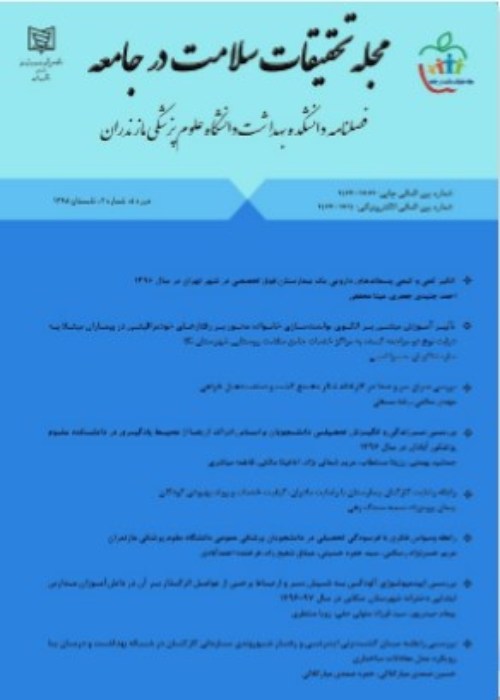Evaluation of Heavy Metal Contamination Ecological Risk in a Food-Producing Ecosystem
Author(s):
Abstract:
Introduction and
Purpose
The consumption of agricultural products cultivated in soils contaminated with heavy metals is very health-threatening. Therefore, the implementation of an inclusive and multilateral assessment of the heavy metal risk on the verge of their entrance to the food chain is a matter of fundamental importance. Regarding this, the present study was conducted with the aim of monitoring the concentration of heavy metals in the surface soil of grape gardens and zoning the area in terms of geoaccumulation index (Igeo), contamination factor, degree of contamination, modified degree of contamination (MDC), pollution load index (PLI), and ecological risk index (RI).Methods
For the purpose of the study, 31 grape gardens were selected in Gahru region (i.e., the main center of grape production) through simple random sampling technique. The surface soil samples were transferred to the laboratory for the analysis of the concentration of cadmium, lead, chromium, copper, and zinc.Results
According to the results, the concentration of the metals in the region was Zn > Cu > Pb > Cr > Cd with the mean total concentrations of 74.87, 55.31, 22.32, 9.81, and 0.91 mg/kg, respectively. Based on the results of the PLI, six grape gardens were classified as insignificantly contaminated (1≤PLI≤2), and the remaining gardens were classified as noncontaminated (PLI300), medium (150Conclusion
In the present study, the Igeo and MDC had higher efficiency and flexibility in the classification of the area in terms of critical metals and critical stations. Meanwhile, cadmium and copper caused the highest concern in some of the grape gardens of the investigated region. Therefore, it is suggested to prevent the entrance of larger amounts of cadmium in the area by training and raising the awareness of the gardeners about the amount of phosphate fertilizers and fungicide and encouraging them to use animal manures and take preventive measures. In addition, the cadmium contamination in the area should be reduced by implementing a soil refinery program and cultivating cadmium adsorbents.Keywords:
Language:
Persian
Published:
Journal of Health Research in Community, Volume:3 Issue: 2, 2017
Pages:
1 to 16
magiran.com/p1762450
دانلود و مطالعه متن این مقاله با یکی از روشهای زیر امکان پذیر است:
اشتراک شخصی
با عضویت و پرداخت آنلاین حق اشتراک یکساله به مبلغ 1,390,000ريال میتوانید 70 عنوان مطلب دانلود کنید!
اشتراک سازمانی
به کتابخانه دانشگاه یا محل کار خود پیشنهاد کنید تا اشتراک سازمانی این پایگاه را برای دسترسی نامحدود همه کاربران به متن مطالب تهیه نمایند!
توجه!
- حق عضویت دریافتی صرف حمایت از نشریات عضو و نگهداری، تکمیل و توسعه مگیران میشود.
- پرداخت حق اشتراک و دانلود مقالات اجازه بازنشر آن در سایر رسانههای چاپی و دیجیتال را به کاربر نمیدهد.
In order to view content subscription is required
Personal subscription
Subscribe magiran.com for 70 € euros via PayPal and download 70 articles during a year.
Organization subscription
Please contact us to subscribe your university or library for unlimited access!


